Di Cao
RealVul: Can We Detect Vulnerabilities in Web Applications with LLM?
Oct 10, 2024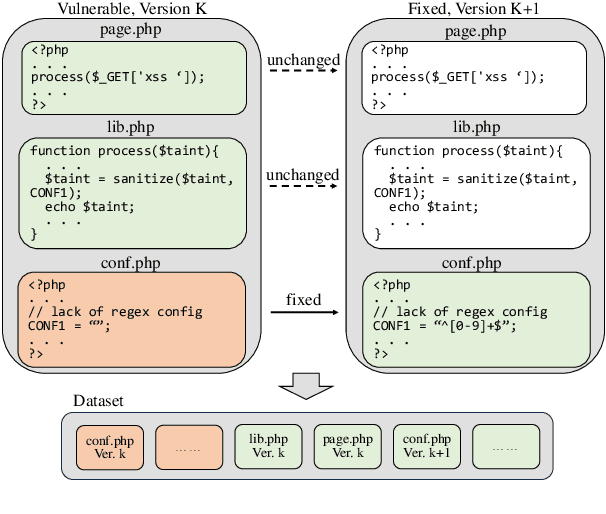
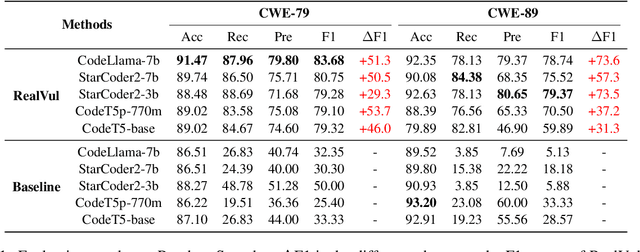
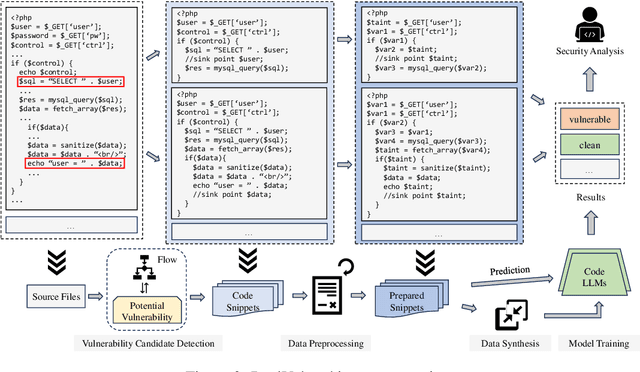
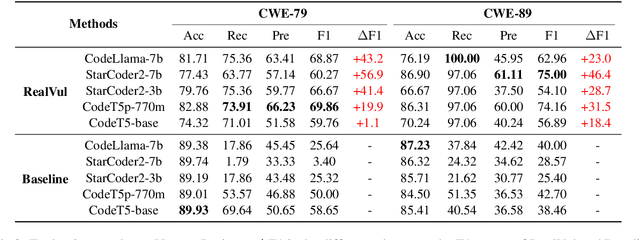
Abstract:The latest advancements in large language models (LLMs) have sparked interest in their potential for software vulnerability detection. However, there is currently a lack of research specifically focused on vulnerabilities in the PHP language, and challenges in extracting samples and processing persist, hindering the model's ability to effectively capture the characteristics of specific vulnerabilities. In this paper, we present RealVul, the first LLM-based framework designed for PHP vulnerability detection, addressing these issues. By vulnerability candidate detection methods and employing techniques such as normalization, we can isolate potential vulnerability triggers while streamlining the code and eliminating unnecessary semantic information, enabling the model to better understand and learn from the generated vulnerability samples. We also address the issue of insufficient PHP vulnerability samples by improving data synthesis methods. To evaluate RealVul's performance, we conduct an extensive analysis using five distinct code LLMs on vulnerability data from 180 PHP projects. The results demonstrate a significant improvement in both effectiveness and generalization compared to existing methods, effectively boosting the vulnerability detection capabilities of these models.
EaTVul: ChatGPT-based Evasion Attack Against Software Vulnerability Detection
Jul 27, 2024Abstract:Recently, deep learning has demonstrated promising results in enhancing the accuracy of vulnerability detection and identifying vulnerabilities in software. However, these techniques are still vulnerable to attacks. Adversarial examples can exploit vulnerabilities within deep neural networks, posing a significant threat to system security. This study showcases the susceptibility of deep learning models to adversarial attacks, which can achieve 100% attack success rate (refer to Table 5). The proposed method, EaTVul, encompasses six stages: identification of important samples using support vector machines, identification of important features using the attention mechanism, generation of adversarial data based on these features using ChatGPT, preparation of an adversarial attack pool, selection of seed data using a fuzzy genetic algorithm, and the execution of an evasion attack. Extensive experiments demonstrate the effectiveness of EaTVul, achieving an attack success rate of more than 83% when the snippet size is greater than 2. Furthermore, in most cases with a snippet size of 4, EaTVul achieves a 100% attack success rate. The findings of this research emphasize the necessity of robust defenses against adversarial attacks in software vulnerability detection.
LightCAM: A Fast and Light Implementation of Context-Aware Masking based D-TDNN for Speaker Verification
Feb 12, 2024
Abstract:Traditional Time Delay Neural Networks (TDNN) have achieved state-of-the-art performance at the cost of high computational complexity and slower inference speed, making them difficult to implement in an industrial environment. The Densely Connected Time Delay Neural Network (D-TDNN) with Context Aware Masking (CAM) module has proven to be an efficient structure to reduce complexity while maintaining system performance. In this paper, we propose a fast and lightweight model, LightCAM, which further adopts a depthwise separable convolution module (DSM) and uses multi-scale feature aggregation (MFA) for feature fusion at different levels. Extensive experiments are conducted on VoxCeleb dataset, the comparative results show that it has achieved an EER of 0.83 and MinDCF of 0.0891 in VoxCeleb1-O, which outperforms the other mainstream speaker verification methods. In addition, complexity analysis further demonstrates that the proposed architecture has lower computational cost and faster inference speed.
Model-Free Voltage Regulation of Unbalanced Distribution Network Based on Surrogate Model and Deep Reinforcement Learning
Jun 24, 2020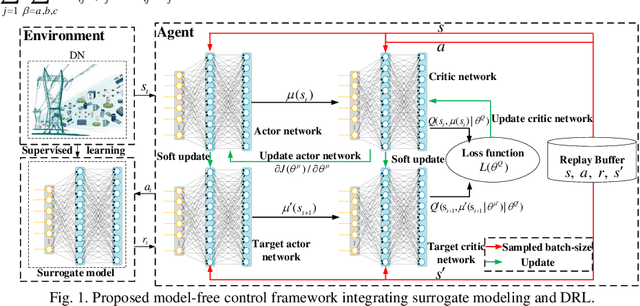

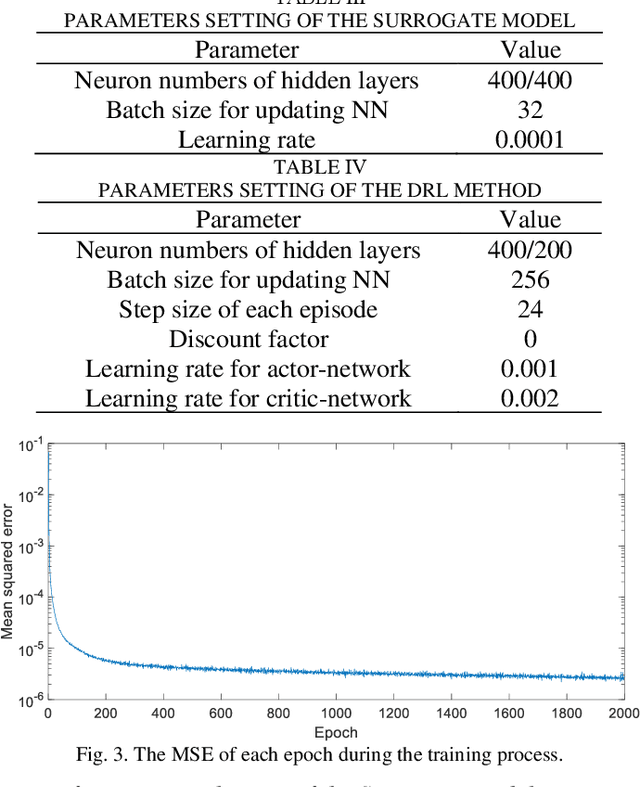
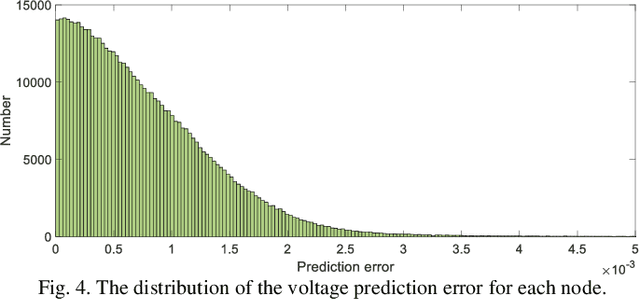
Abstract:Accurate knowledge of the distribution system topology and parameters is required to achieve good voltage controls, but this is difficult to obtain in practice. This paper develops a model-free approach based on the surrogate model and deep reinforcement learning (DRL). We have also extended it to deal with unbalanced three-phase scenarios. The key idea is to learn a surrogate model to capture the relationship between the power injections and voltage fluctuation of each node from historical data instead of using the original inaccurate model affected by errors and uncertainties. This allows us to integrate the DRL with the learned surrogate model. In particular, DRL is applied to learn the optimal control strategy from the experiences obtained by continuous interactions with the surrogate model. The integrated framework contains training three networks, i.e., surrogate model, actor, and critic networks, which fully leverage the strong nonlinear fitting ability of deep learning and DRL for online decision making. Several single-phase approaches have also been extended to deal with three-phase unbalance scenarios and the simulation results on the IEEE 123-bus system show that our proposed method can achieve similar performance as those that use accurate physical models.
Distributed Voltage Regulation of Active Distribution System Based on Enhanced Multi-agent Deep Reinforcement Learning
May 31, 2020

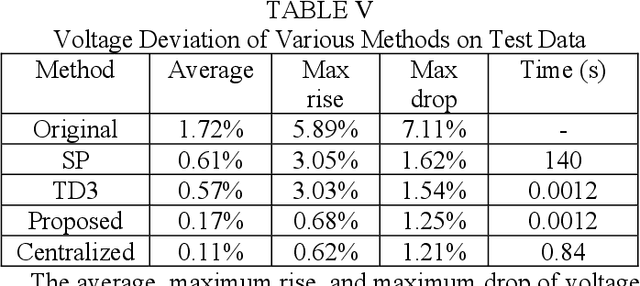
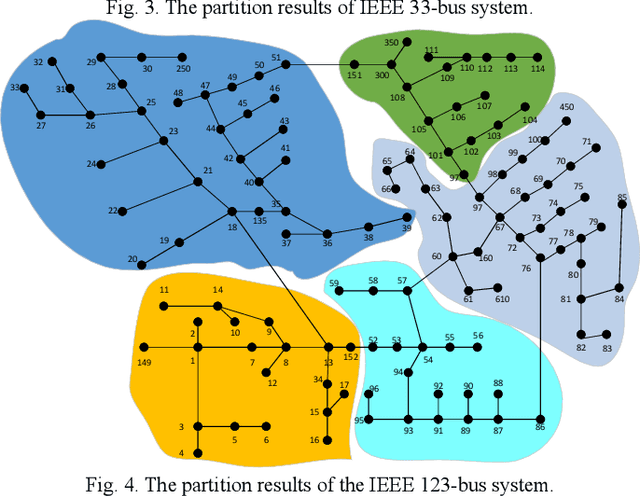
Abstract:This paper proposes a data-driven distributed voltage control approach based on the spectrum clustering and the enhanced multi-agent deep reinforcement learning (MADRL) algorithm. Via the unsupervised clustering, the whole distribution system can be decomposed into several sub-networks according to the voltage and reactive power sensitivity. Then, the distributed control problem of each sub-network is modeled as Markov games and solved by the enhanced MADRL algorithm, where each sub-network is modeled as an adaptive agent. Deep neural networks are used in each agent to approximate the policy function and the action value function. All agents are centrally trained to learn the optimal coordinated voltage regulation strategy while executed in a distributed manner to make decisions based on only local information. The proposed method can significantly reduce the requirements of communications and knowledge of system parameters. It also effectively deals with uncertainties and can provide online coordinated control based on the latest local information. Comparison results with other existing model-based and data-driven methods on IEEE 33-bus and 123-bus systems demonstrate the effectiveness and benefits of the proposed approach.
 Add to Chrome
Add to Chrome Add to Firefox
Add to Firefox Add to Edge
Add to Edge